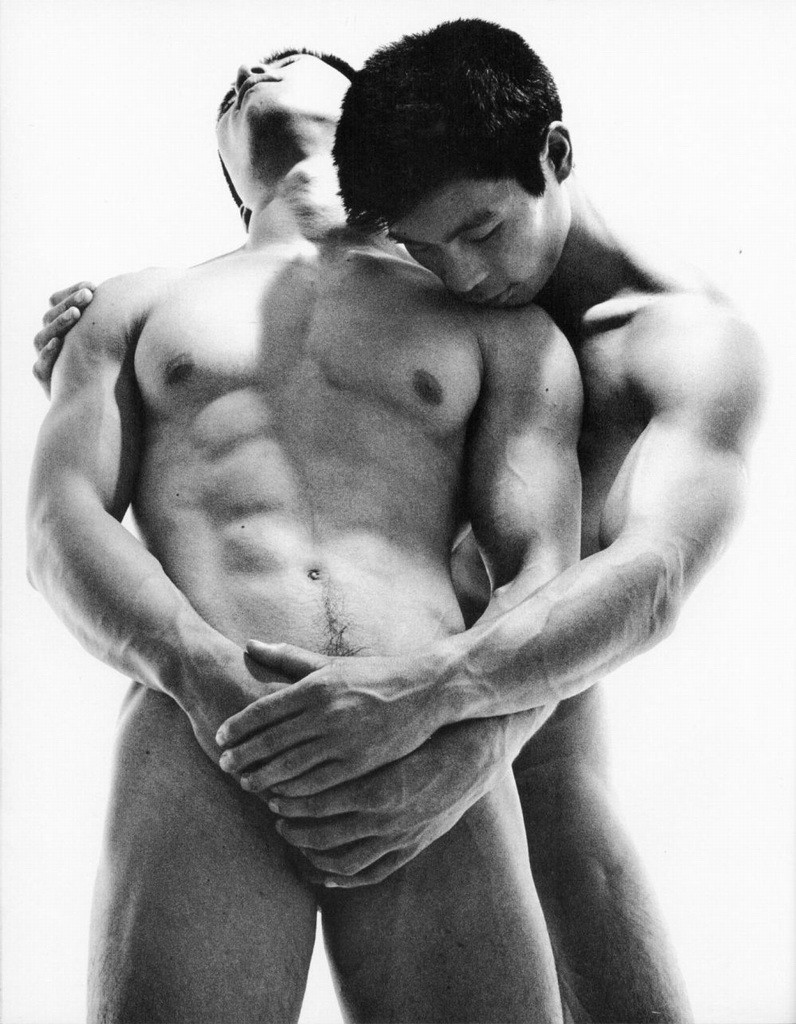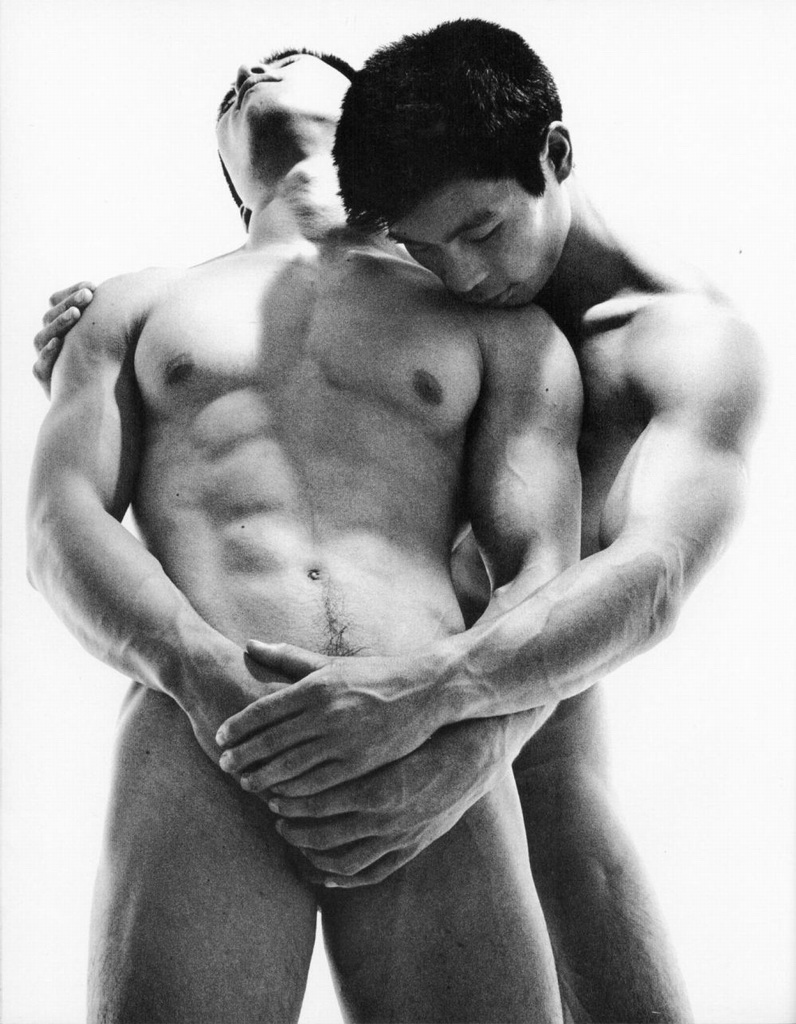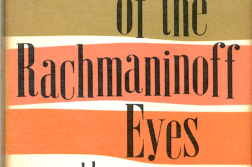IN 1972, the Rho-Delta Press of Los Angeles published Tamotsu Yato’s book Otoko: Photo-Studies of the Young Japanese Male. The book has long been out of print, and it usually commands a hefty price from rare book dealers. But the story of its origins and eventual publication is notable—and ultimately poignant—because it intersects with the life of one of Japan’s most complex and fascinating literary figures.
By the time Otoko appeared, Yato had already started to make a name for himself with his photography. His first book, Young Samurai: Bodybuilders of Japan, was published in 1967 by Grove Press. It was soon followed, in 1968, by Naked Festival, published in America by the lesser- known John Weatherhill, Inc. The second book took as its subject the hadaka matsuri, annual harvest and fertility festivals celebrated across Japan and featuring huge, raucous processions of nearly nude young men carrying shrines dedicated to the gods of Japan’s Shinto religion. The common element of both subjects, of course, is that they allowed Yato to focus on the beauty of young men.
known John Weatherhill, Inc. The second book took as its subject the hadaka matsuri, annual harvest and fertility festivals celebrated across Japan and featuring huge, raucous processions of nearly nude young men carrying shrines dedicated to the gods of Japan’s Shinto religion. The common element of both subjects, of course, is that they allowed Yato to focus on the beauty of young men.
In the late 1960’s and early 70’s, for Western audiences at least, any kind of artwork celebrating the erotic beauty of Asian males was uncommon (one could argue that such is still the case today). What helped Yato’s first two books to find a wider audience was the fact that they featured introductions by Yukio Mishima, perhaps (after Nobel Prize-winning novelist Yasunari Kawabata) the most famous writer to emerge from Japan in the first half of the 20th century.
Homoerotic themes, a glorification of the samurai tradition, and a disturbing preoccupation with eroticized violence permeate Mishima’s work. His first novel, Confessions of a Mask, published in 1948 when he was still in his twenties, tells the story of a young man named Omi and his ambivalent and troubled sexual awakening. It is widely considered to be at least semi-autobiographical. In one of its most vivid scenes, Omi, browsing in his father’s library, finds a reproduction of Guido Reni’s portrait of St. Sebastian. Entranced by Reni’s portrayal of the beautiful, dying male body pierced with arrows, Omi masturbates and climaxes on the picture.
By the time Mishima was writing his introductions for Yato’s books, he had achieved international fame and was a contender for the Nobel Prize (a recognition he never received). But it’s hardly surprising that he would attach his name to Yato’s work.
In “On Nakedness and Shame,” his introductory essay to Yato’s Naked Festival, Mishima parses the cultural and religious significance of nakedness in Japanese history. He even quotes a passage from Confessions of a Mask in which Omi watches a hadaka matsuri procession and is fascinated by the “expression of the most wanton and undisguised rapture in the world” that he sees on the faces of the young men who storm his family’s garden. For Mishima, the naked festivals, though widely derided as vulgar during the Meiji Restoration’s embrace of Westernization, were later rightly reclaimed by the Japanese as an expression and validation of Japanese identity.
In Yato’s festival photographs, Mishima sees the Japanese male stepping away from Westernization. “If only for a day,” he writes, “thanks to their healthy young bodies, thanks to our primitive past, they are once again the essential man.” For Mishima, then, the celebration of the Japanese male’s body was a political act, and a sacramental one—and it was a sacrament that he himself ardently embraced.
In his foreword to Otoko, Yato notes that it was Mishima who suggested the idea of the book to him. In the winter of 1967, Mishima posed for Yato, brandishing a samurai sword, clad only in a white loincloth, rolling his well muscled body around in the snow. Donald Richie, the American expatriate who has become the leading interpreter of Japanese culture for the West, was a friend of both Mishima and Yato and was present for the photo session. He describes it in his Japan Journals: “Yukio rolled about and Tamotsu snapped while I looked down on them and remembered myself as a child playing in the snow. We used to lie on our backs and move our arms to make snow angels. Mishima, however, was tracing something more serious.” The “something” that Richie cites is the samurai tradition’s valorization of action, of endurance, and of the warrior’s honor.
Yato’s Otoko not only celebrates the beauty of young Japanese men, but also the warrior spirit. Many of the models pose with swords, as does Mishima in the one photo of him included in the book. Another model wears a samurai helmet, its visor shadowing and obscuring his eyes. There’s even one young man posing, à la St. Sebastian, with a single arrow piercing his abdomen, the dark blood running under his white loincloth. In several photos, young male couples embrace and recline upon each other with arresting beauty and tenderness, as if to evoke the legendary warrior–lovers of ancient Sparta.
Mishima longed to return Japan to the military glories of its past. In his last, desperate attempt to awaken Japan to this vision, an attempt that he must surely have recognized as Quixotic and doomed from the start, he and his right-wing followers kidnapped a general in his office and briefly held him hostage. Then, in a carefully staged event, Mishima committed seppuku, plunging a ceremonial dagger into his abdomen while, almost simultaneously, his assistant beheaded him. These events shocked Japan, and the world, in 1970. Yato delayed the publication of Otoko because of them. When he finally did move forward with the book, he dedicated it to Mishima’s memory. As beautiful as the photographs in Otoko are, they are rendered even more powerful by the enigma of Mishima’s tortured sexuality, his anachronistic idealization of the samurai tradition, and his untimely death.
Jim Nawrocki, a writer based in San Francisco, is a frequent contributor to the G&LR.





